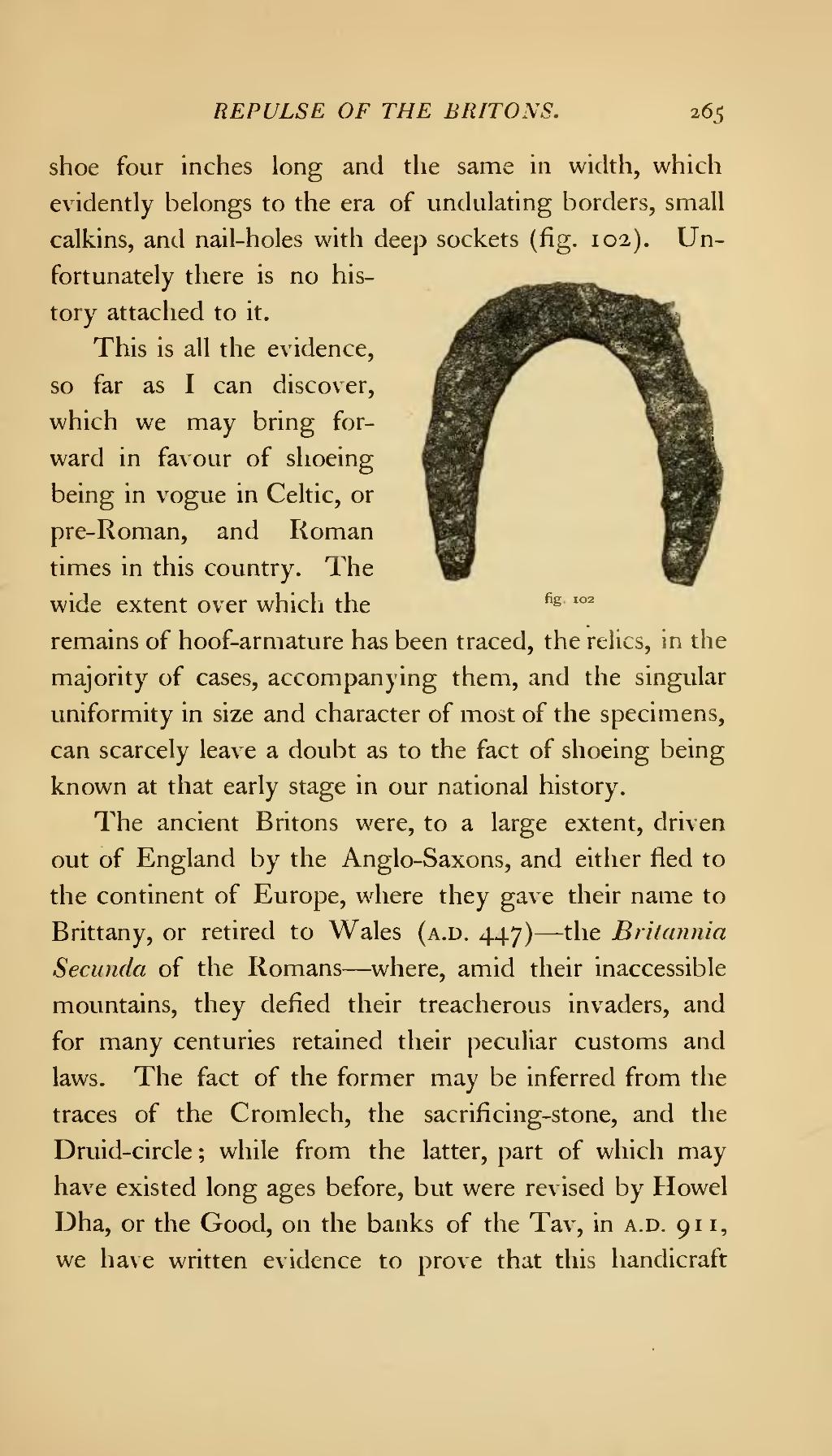shoe four inches long and the same in width, which evidently belongs to the era of undulating borders, small calkins, and nail-holes with deep sockets (fig. 102). Unfortunately there is no history attached to it.
This is all the evidence, so far as I can discover, which we may bring forward in favour of shoeing being in vogue in Celtic, or pre-Roman, and Roman times in this country. The wide extent over which the remains of hoof-armature has been traced, the relics, in the majority of cases, accompanying them, and the singular uniformity in size and character of most of the specimens, can scarcely leave a doubt as to the fact of shoeing being known at that early stage in our national history.
The ancient Britons were, to a large extent, driven out of England by the Anglo-Saxons, and either fled to the continent of Europe, where they gave their name to Brittany, or retired to Wales (A.D. 447)—the Britannia Secunda of the Romans—where, amid their inaccessible mountains, they defied their treacherous invaders, and for many centuries retained their peculiar customs and laws. The fact of the former may be inferred from the traces of the Cromlech, the sacrificing-stone, and the Druid-circle; while from the latter, part of which may have existed long ages before, but were revised by Howel Dha, or the Good, on the banks of the Tav, in A.D. 911, we have written evidence to prove that this handicraft

